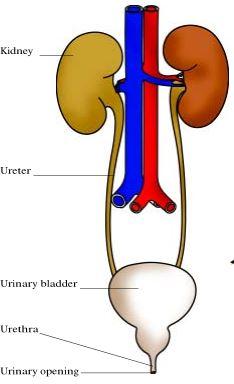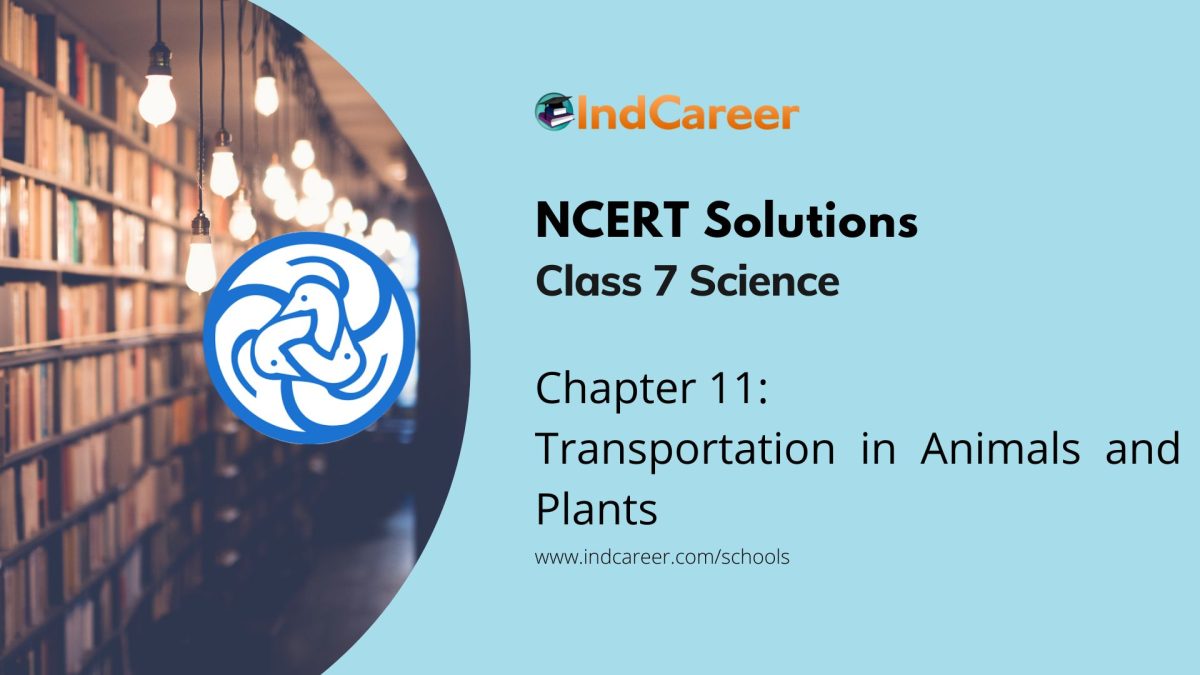Class 7: Science Chapter 11 solutions. Complete Class 7 Science Chapter 11 Notes.
Contents
NCERT Solutions for 7th Class Science: Chapter 11-Transportation in Animals and Plants
NCERT 7th Science Chapter 11, class 7 Science Chapter 11 solutions
Page No: 131
Exercises
1. Match structures given in Column I with functions given in Column II.
| Column I | Column II |
| (i) Stomata | (a) Absorption of water |
| (ii) Xylem | (b) Transpiration |
| (iii) Root hairs | (c) Transport of food |
| (iv) Phloem | (d) Transport of water |
| – | (e) Synthesis of carbohydrates |
Answer
| Column I | Column II |
| (i) Stomata | (b) Transpiration |
| (ii) Xylem | (d) Transport of water |
| (iii) Root hairs | (a) Absorption of water |
| (iv) Phloem | (c) Transport of food |
2. Fill in the blanks.
(i) The blood from the heart is transported to all parts of the body by the __________.
(ii) Haemoglobin is present in __________ cells.
(iii) Arteries and veins are joined by a network of __________.
(iv) The rhythmic expansion and contraction of the heart is called __________.
(v) The main excretory product in human beings is __________.
(vi) Sweat contains water and __________.
(vii) Kidneys eliminate the waste materials in the liquid form called __________.
(viii) Water reaches great heights in the trees because of suction pull caused by __________.
Answer
(i) The blood from the heart is transported to all parts of the body by the arteries.
(ii) Haemoglobin is present in red blood cells.
(iii) Arteries and veins are joined by a network of capillaries.
(iv) The rhythmic expansion and contraction of the heart is called heart beat.
(v) The main excretory product in human beings is urea.
(vi) Sweat contains water and salts.
(vii) Kidneys eliminate the waste materials in the liquid form called urine.
(viii) Water reaches great heights in the trees because of suction pull caused by transpiration.
Page No: 132
3. Choose the correct option:
(a) In plants, water is transported through
(i) xylem
(ii) phloem
(iii) stomata
(iv) root hair
► (i) xylem
(b) Water absorption through roots can be increased by keeping the plants
(i) in the shade
(ii) in dim light
(iii) under the fan
(iv) covered with a polythene bag
► (iii) under the fan
4. Why is transport of materials necessary in a plant or in an animal? Explain.
Answer
(i) Transport of materials in a plant or in a animal is necessary for carrying out metabolic activities.
(ii) Transportation of materials help in the supply of nutrients and energy to each every parts of animals and plants need energy which they get from the transported materials.
(iii) Also, the waste materials produced during metabolic activities are toxic and hence need to be removed from the body by transportation.
5. What will happen if there are no platelets in the blood?
Answer
Platelets help in the clotting of blood at the time of injury. If there would be no platelets, then there would be no clotting of blood and person may die due to excess flow of blood from the body.
6. What are stomata? Give two functions of stomata.
Answer
The tiny holes or openings present under the leaves of the plants is called stomata.
Two functions of stomata:
(i) It helps in breathing of the plants.
(ii) It helps in exchange of gases takes place inside the plants cells.
7. Does transpiration serve any useful function in the plants? Explain.
Answer
(i) The excess water absorbed by the root system of the plants lost in the form of water vapour to their surroundings by the process of transpiration.
(ii) It also in transport of absorbed water to the leaves of plants from the roots for photosynthesis and helping the plants keeping erect.
(iii) It also produces cooling effect for the plants.
8. What are the components of blood?
Answer
The main components of blood are:
(i) Plasma
(ii) Red blood cells (RBC)
(iii) White blood cells (WBC)
(iv) Platelets
9. Why is blood needed by all the parts of a body?
Answer
Blood is needy by all the parts of a body because:
(i) It carries oxygen to all the parts of the body and also carries carbon dioxide back to the lungs.
(ii) It carries digested food to various parts of the body for absorption.
(iii) It contains platelets which help in the clotting of blood.
(iv) It helps in maintaining constant body temperature.
(v) It transports hormones and help in fighting the body with germs and bacteria.
10. What makes the blood look red?
Answer
The presence of red pigment called haemoglobin in red blood cells (RBC) makes the blood look red.
11. Describe the function of the heart.
Answer
Functions of the heart:
(i) It helps in the circulation of oxygen rich blood throughout the body by the pumping.
(ii)It receives oxygenated blood from the lungs.
(iii) It also pumps back the blood carrying carbon dioxide to the lungs.
(iv) It shows rhythmic contraction and relaxation for movement of blood.
12. Why is it necessary to excrete waste products?
Answer
The waste materials produced during the metabolic activities are toxic to the body and must not be accumulated inside and therefore it has to be excreted out from the body by the process of excretion.
13. Draw a diagram of the human excretory system and label the various parts.
Answer

NCERT 7th Science Chapter 11, class 7 Science Chapter 11 solutions
NCERT Solutions for 7th Class Science: Chapter 11: Download PDF
NCERT Solutions for 7th Class Science: Chapter 11-Transportation in Animals and Plants
Chapter-wise NCERT Solutions Class 7 Science
About NCERT
The National Council of Educational Research and Training is an autonomous organization of the Government of India which was established in 1961 as a literary, scientific, and charitable Society under the Societies Registration Act. Its headquarters are located at Sri Aurbindo Marg in New Delhi. Visit the Official NCERT website to learn more.
